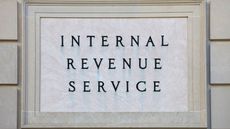Opportunity Zones and Inflation: What Investors Want to Know
Given the backdrop of inflation, rising interest rates and a possible recession in 2023, what can opportunity zones do for investors?


Even as rising inflation and interest rates increase the costs of doing business in the real estate market, the best days of QOZs are still ongoing. So what is the relationship between opportunity zones and inflation? What if it’s even positive?
In June 2022, inflation reached a four-decade high of 9.1%. While it has fallen somewhat (to “only” 7.1% in November), there is no sign that inflationary pressures will disappear as a primary concern of most investors any time in the near future.
Of course, rising prices are hardly the only concern facing us right now. The inflationary spiral of 2022 has led directly to a series of increases in interest rates, which in turn has partially led directly to a double-digit loss in the stock market.

Sign up for Kiplinger’s Free E-Newsletters
Profit and prosper with the best of expert advice on investing, taxes, retirement, personal finance and more - straight to your e-mail.
Profit and prosper with the best of expert advice - straight to your e-mail.
Is help on the way for the U.S. economy? Not to hear the lion’s share of economists talk about it. Those who don’t believe we’re in a recession right now see one coming in the next six to twelve months, and the only disagreement seems to be how long it will last and how severe it will be.
Is There a Positive Relationship Between Opportunity Zones and Inflation?
Given this backdrop, what do investors need to know now about opportunity zones and macroeconomic turbulence? Is it possible that there could even be a positive relationship between inflation and opportunity zones? To the extent that one acknowledges real estate investment as one of the best historical hedges against inflation — then the answer is certainly yes!
Created by the Tax Cuts and Jobs Act of 2017, opportunity zones, also known as qualified opportunity zones or QOZs, run the gamut from rural areas with little economic development and few services for their residents, to heavily populated cities with neighborhoods and industrial areas in transition.
Opportunity Zones Have Multiple Tax Benefits
Of course, while many investors are at least partially motivated by the possibility of seeing their investment dollars do well in the form of community development, the positive return on such investments, accompanied by multiple tax benefits, remain a primary motivation. Tax deferral until 2026, generally considered payable in 2027, is useful to many CPAs and investors as part of tax planning, and the appreciated value in an opportunity fund is 100% tax-free if held to term and if all of the IRS rules are followed.
To Be More Clear ...
Any corporation or individual with unrealized capital gains can qualify to make an opportunity zone fund investment and enjoy not only the potential return on their investments, but at least one of two principal tax benefits:
- Temporary deferral of capital gains taxes. Investing realized gains in a qualified opportunity fund means those capital gains are not taxed until the end of 2026 or until the asset is sold, whichever comes first.
- Permanent exclusion of taxable income on any new capital gains. Finally, if an investment is held for at least 10 years, capital gains taxes on the opportunity zone investment are eliminated entirely.
Investors with a real estate bent often see added appeal if their dollars are locally invested, and it’s here that OZ funds really have the potential to shine. The 8,762 Census tracts that are designated opportunity zones represent 50 states, four U.S. territories and the District of Columbia, so it’s relatively easy to find an OZ fund with local interest and significant investment potential, no matter where you are.
How Do Inflation, and General Macroeconomic Turbulence, Affect the Feasibility of QOZ Investments?
It’s important to remember that, while real estate in general is universally held in high esteem as a hedge against inflation, the idea of investing in real estate in the development stage is a bit more nuanced. As with any investment, risk and reward are intertwined and should be considered accordingly.
QOZ funds find themselves facing some headwinds as inflation and interest rates both continue to rise, and with the Fed promising as many interest rate hikes as necessary to break the back of rising inflation, there seems to be no end in sight to the spiraling costs of doing business in the real estate market.
So Are the Best Days Over for Opportunity Zone Funds? In a Word: NO
In fact, Congress is now considering extending the OZ benefit for at least two more years. While QOZ investment returns may be difficult to project in the short term, they are not intended as short-term investments and should not be viewed as such. For investors sitting on large capital gains, the OZ program must be viewed as it was intended: as an extraordinary tax incentive program that empowers investors to defer significant capital gains from any investment that has significantly increased in value.
It doesn’t matter if your gains originated from a frothy stock market, sale of a closely held business or a real estate deal that benefited from years of historically low interest rates. The tax benefits associated with OZ funds offer an umbrella against a potentially staggering tax burden.
It's not hard to visualize higher interest rates for the foreseeable future, which will increase the dollar value of capital gains. Coupled with likely higher federal and state tax rates, the value of investing in an OZ fund cannot be understated as a means of reducing present-day tax exposure, with the long-term potential for eliminating it entirely.
As always, it remains wise to consult closely with your tax counsel and financial planning team before making any investment.
Daniel C. Goodwin, Provident Wealth Advisors and AAG Capital, Inc. are not attorneys and do not provide legal advice. Nothing in this infographic should be construed as legal or tax advice. An investor would always be advised to seek competent legal and tax counsel for his or her own unique situation and state-specific laws. Visit our website at provident1031.com.
This article was written by and presents the views of our contributing adviser, not the Kiplinger editorial staff. You can check adviser records with the SEC or with FINRA.

Daniel Goodwin is a Kiplinger's contributor on various financial planning topics and has also been featured in U.S. News and World Report, FOX 26 News, Business Management Daily and BankRate Inc. He is the author of the book Live Smart - Retire Rich and is the Masterclass Instructor of a 1031 DST Masterclass at www.Provident1031.com. Daniel regularly gives back to his community by serving as a mentor at the Sam Houston State University College of Business. He is the Chief Investment Strategist at Provident Wealth Advisors, a Registered Investment Advisory firm in The Woodlands, Texas. Daniel's professional licenses include Series 65, 6, 63 and 22. Daniel’s gift is making the complex simple and encouraging families to take actionable steps today to pursue their financial goals of tomorrow.
-
-
 IRS is Targeting Promoters of Abusive Tax Schemes Kiplinger Tax Letter
IRS is Targeting Promoters of Abusive Tax Schemes Kiplinger Tax LetterTax Letter Tax schemes range from basic tax dodges to highly complex transactions.
By Joy Taylor • Published
-
 How to Save on Prescription Medication
How to Save on Prescription MedicationHow you can save money on prescription medication amidst rising prices.
By Erin Bendig • Published
-
 We Don’t Have to Let AI Win
We Don’t Have to Let AI WinJust as companies and employees evolved with tech advances in the past, we can do that again with AI, but employers need to focus on preparing their workforces to keep up.
By Neale Godfrey, Financial Literacy Expert • Published
-
 Five Ways to Get Key Employees to Ride Out Big Changes
Five Ways to Get Key Employees to Ride Out Big ChangesBusiness transitions can be difficult on workers, but company owners can take steps to incentivize key employees to stick around during times of change.
By Kris Maksimovich, AIF®, CRPC®, CPFA®, CRC® • Published
-
 Are You Overlooking Your Most Valuable Retirement Asset?
Are You Overlooking Your Most Valuable Retirement Asset?Selling your home and relocating could become a bigger part of the retirement conversation, given how real estate markets have boomed over the last decade.
By Julie Virta, CFP®, CFA, CTFA • Published
-
 Insuring Your Plan for Retirement Income
Insuring Your Plan for Retirement Income‘Longevity insurance’ ensures you don’t run out of money in retirement. How to figure out how much you need, the types of annuities to use and when the income should kick in are tricky questions, though.
By Jerry Golden, Investment Adviser Representative • Published
-
 Pros and Cons of Fixed Index Annuities as Retirement Tools
Pros and Cons of Fixed Index Annuities as Retirement ToolsWith so many FIA products available, each with its own contract terms and varying rates, it's crucial to invest in one that fits your retirement plan.
By Cliff Ambrose • Published
-
 Retirement Planning with Life Insurance
Retirement Planning with Life InsuranceAn indexed universal life insurance policy can help you with tax mitigation and extra retirement income in addition to death benefits for your beneficiaries.
By Mike Decker • Published
-
 Which Retirement Accounts Should You Withdraw From First?
Which Retirement Accounts Should You Withdraw From First?Here’s a standard order for when you should tap which account when you’re in retirement.
By Evan T. Beach, CFP®, AWMA® • Published
-
 Nervous About the Markets and Economy? Consider History
Nervous About the Markets and Economy? Consider HistoryTo put things in perspective, focus on what you can control and remember that the ups and downs of the markets and economy can be cyclical.
By Erin Wood, CFP®, CRPC®, FBSⓇ • Published









